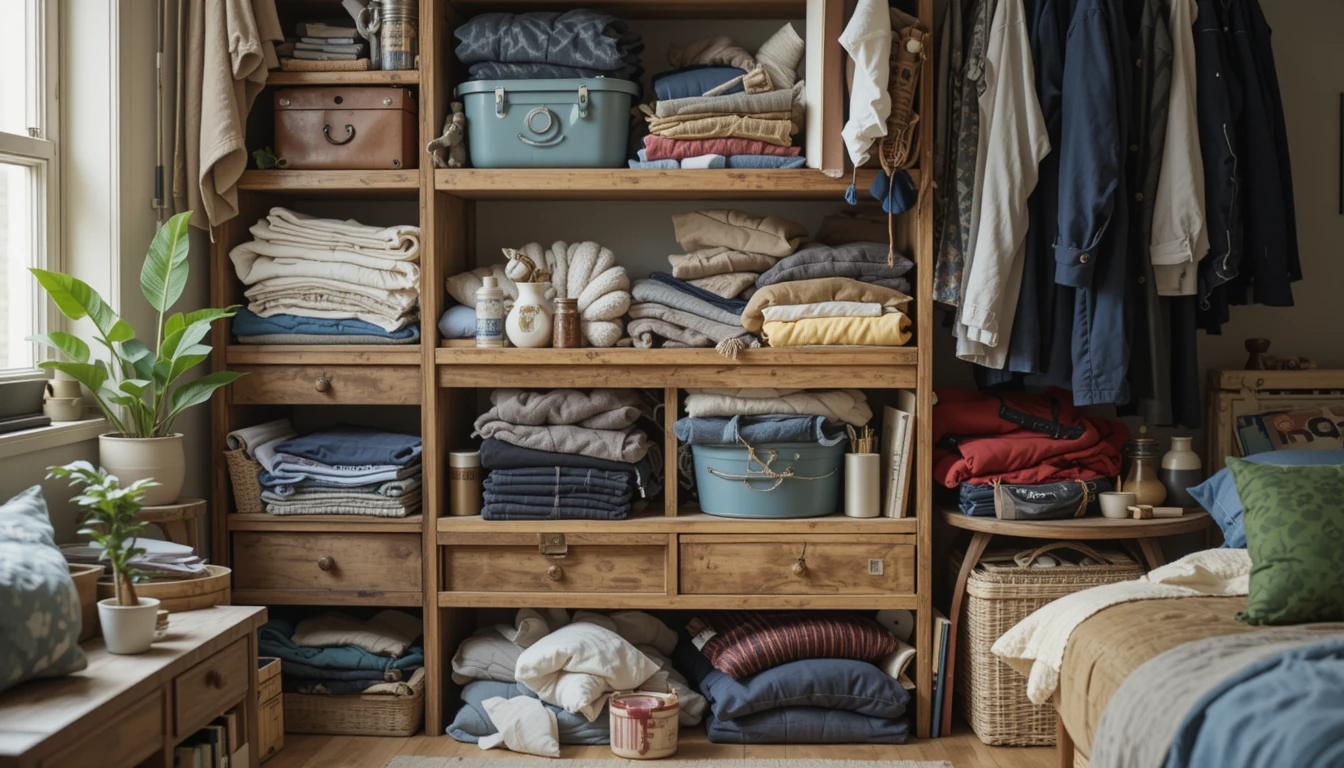Clear your space, clear your mind—without creating more waste or spending a dime.
Decluttering your home can feel like hitting the reset button. But if you’ve ever loaded up trash bags of stuff and tossed them out, you’ve probably wondered—is this really helping the planet? The answer is: not always. When we declutter without thought, we often just shift our clutter from our homes to landfills.
The good news? You can declutter sustainably, keeping your stuff out of the trash, supporting your community, and even giving old items new life—all without spending any money.
Here’s how to do it right.
🧠 1. Start with a Purpose, Not Just a Purge
Before you start pulling everything out of your closets, get clear on why you’re decluttering. Is it to create more space? To live more intentionally? To reduce waste? Having a purpose helps you make better decisions and avoid the “just get rid of it” mindset.
Tip:
Focus on letting go of what no longer serves you—not just tossing things. You’re not trashing your life—you’re setting it free.
♻️ 2. Sort Smart: Keep, Donate, Repurpose, Recycle
As you declutter, create simple piles to guide your decisions. The more intentional your sorting process, the less likely you are to waste perfectly usable stuff.
Try These Categories:
-
Keep – You use it regularly or truly love it.
-
Donate – Still usable, but not needed by you.
-
Repurpose – Could be turned into something new.
-
Recycle – Only if it can’t be reused or repurposed.
Avoid the “trash” pile unless it’s absolutely necessary.
🎁 3. Donate Strategically
Instead of dumping everything at your local thrift shop (which may already be overwhelmed), find the right place for the right items.
Donation Ideas:
-
Books → Little Free Libraries, schools, shelters
-
Clothing → Homeless shelters, women’s centers, community closets
-
Toys & baby gear → Family shelters or neighborhood swap groups
-
Kitchenware & furniture → Refugee resettlement programs or Facebook groups
Why it’s sustainable: Thoughtful donation extends the life of your stuff and helps it truly be used again—not tossed behind the scenes.
🛠️ 4. Get Creative with Repurposing
You don’t need to spend money on storage bins or new “organizing systems.” Look around your home and repurpose what you already have.
DIY Storage Ideas:
-
Glass jars = pantry or bathroom organizers
-
Shoe boxes = drawer dividers
-
Old mugs = desk caddies for pens/scissors
-
Tin cans = small item holders (jewelry, craft supplies)
Not only is this free, but it reduces the need to buy new plastic containers or decor.
🔄 5. Host a Free Swap or Give It Away
One person’s clutter is another’s treasure! Instead of tossing, try re-gifting or organizing a free swap.
Ways to Give Without Waste:
-
Start a “free stuff” box in your lobby, office, or school
-
Post items on local Buy Nothing groups or Freecycle
-
Host a community swap event with friends or neighbors
Why it’s sustainable: Items stay in circulation and avoid the landfill, plus you build community in the process.
♻️ 6. Recycle Responsibly
When something really can’t be reused or donated, recycle it the right way. Not everything goes in your curbside bin, so check your city’s recycling rules.
Look For:
-
E-waste drop-offs for old tech
-
Textile recycling for worn-out clothes
-
Plastic film recycling at grocery stores (for bags/wrappers)
Pro Tip: Google “recycling near me + [item]” to find free local options.
🪴 7. Use “Trash” Creatively
Some “useless” items actually make great DIY materials or garden helpers.
Examples:
-
Old T-shirts → Cut into cleaning cloths or reusable rags
-
Egg cartons → Use as seed starters
-
Glass jars → Herb gardens, votive holders, or paint palettes
-
Worn towels → Pet bedding, spill rags, or donate to animal shelters
Why it’s sustainable: You delay or avoid the landfill entirely—and sometimes save money on things you’d otherwise buy.
📦 8. Avoid Buying New “Organizing Stuff”
Retailers love to sell the idea that you need fancy bins and baskets to stay organized. Truth is, you probably don’t need to buy anything.
Before shopping, ask:
-
Can I repurpose something I already have?
-
Do I really need this item to stay organized?
-
Will it still be useful long-term, or is it a temporary fix?
Decluttering isn’t about replacing old clutter with new clutter labeled “storage.”
🕰️ 9. Declutter Slowly, Intentionally
It’s tempting to do it all at once, but a slow, room-by-room approach allows you to be more thoughtful and avoid tossing things out in a rush. You’ll make better decisions and feel less overwhelmed.
Try 1 drawer a day, or 1 shelf a weekend. You’re more likely to find free, creative ways to reuse or donate when you’re not working under pressure.
💚 Final Thoughts: Decluttering Without the Waste
Decluttering sustainably is about more than just tidying up—it’s about rethinking your relationship with stuff, reducing your environmental footprint, and giving your unwanted items a second chance. And the best part? You can do it all without spending a single penny.
By choosing to declutter thoughtfully, you’re not only clearing your space, but also creating less waste, supporting your community, and taking a meaningful step toward a more intentional, sustainable lifestyle.
Ready to start?
Pick one small area—your junk drawer, closet, or kitchen shelf—and use these tips to declutter without the guilt (or the spending). 🌱♻️
